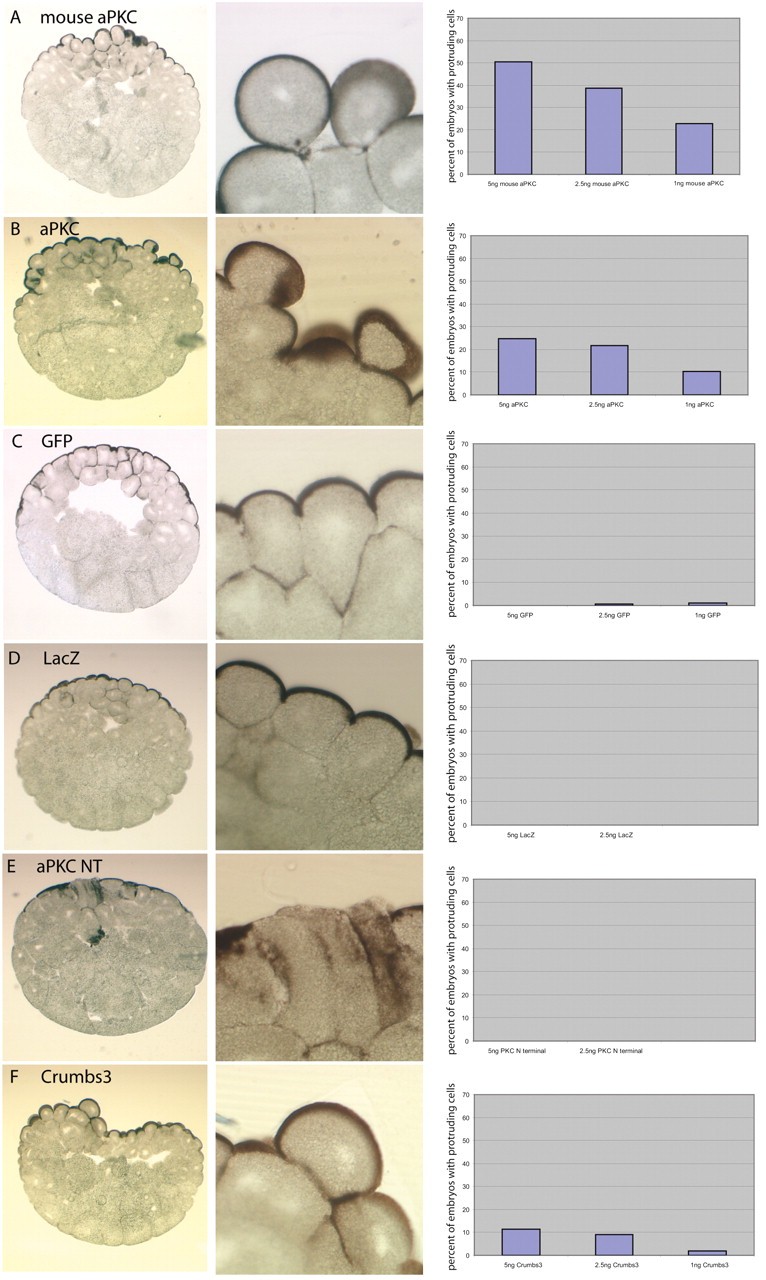XB-IMG-130076
Xenbase Image ID: 130076

|
Fig. 2. aPKC overexpression produces rounded, protruding, hyper-pigmented cells. (A,B) Mouse and Xenopus aPKC overexpression produced embryos with protruding superficial cells and extended pigmented (apical) surface when compared with controls (C,D). (E) Overexpression of a truncated version of the Xenopus tropicalis protein, PKC NT, which lacks the entire kinase domain, failed to produce this phenotype. (F) Crumbs3 overexpression caused cell protrusion and over-apicalisation, similar to that of aPKC, but was less effective in that the percentage of affected embryos was lower. Quantification was carried out blind, by counting the number of embryos with protruding cells. Right panels show the percentage of affected embryos at each concentration of injected RNA. Each experiment was carried out at least three times and the average is shown. Image published in: Chalmers AD et al. (2005) Copyright © 2005. Image reproduced with permission of the Publisher and the copyright holder. This is an Open Access article distributed under the terms of the Creative Commons Attribution License. Larger Image Printer Friendly View |
